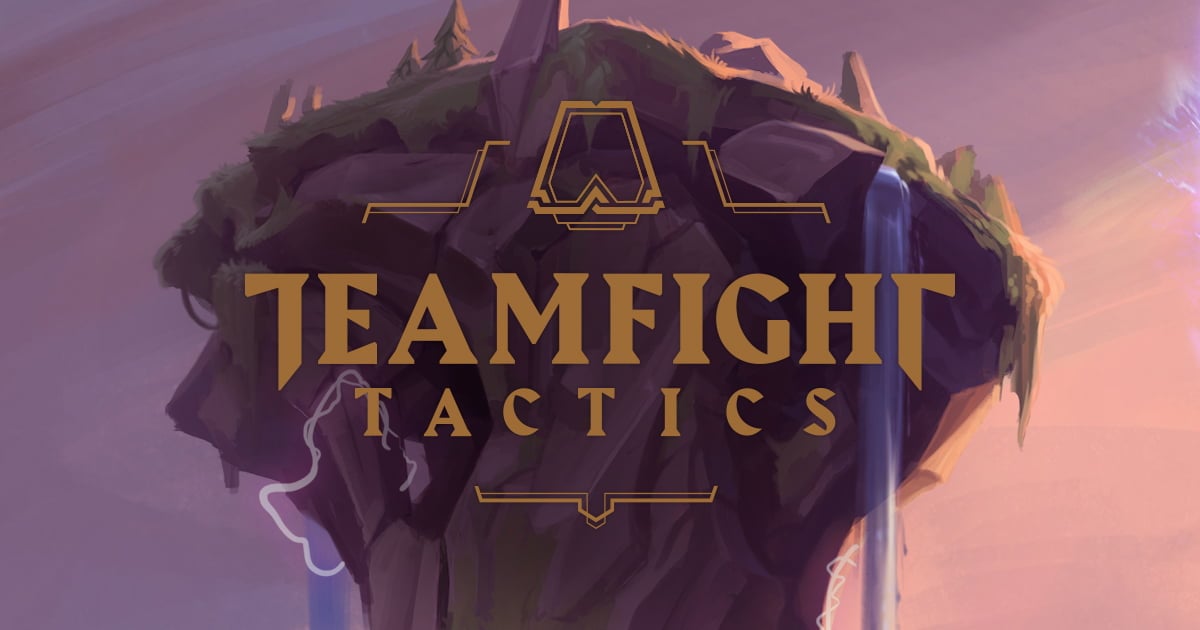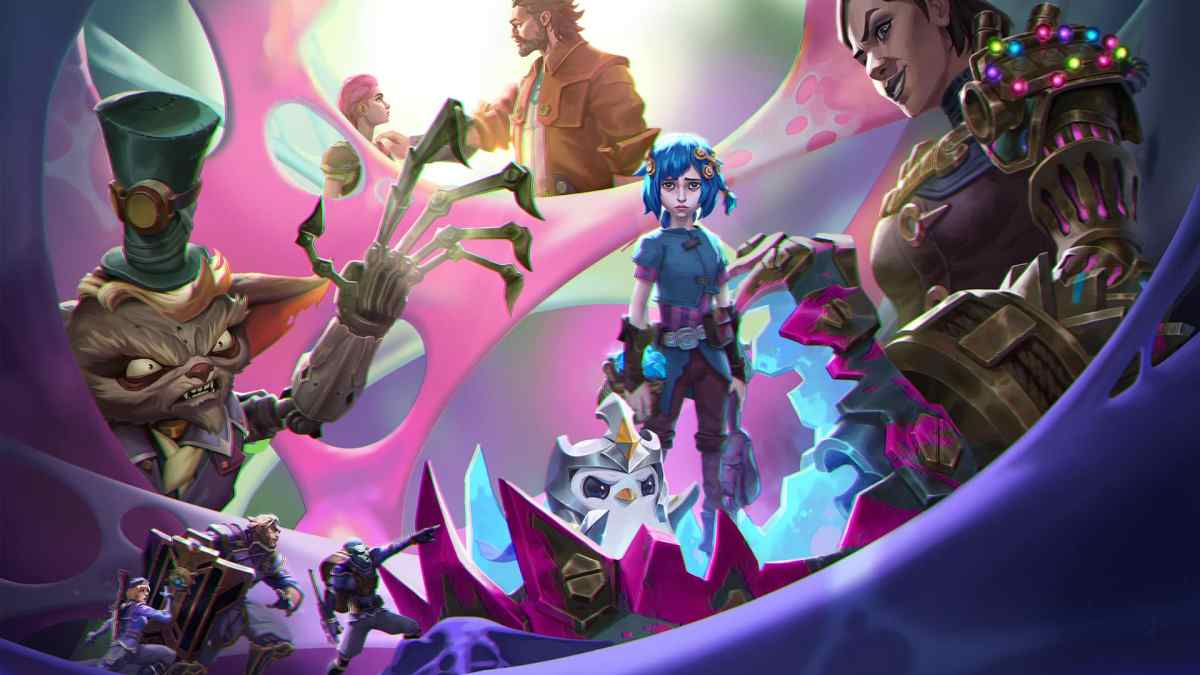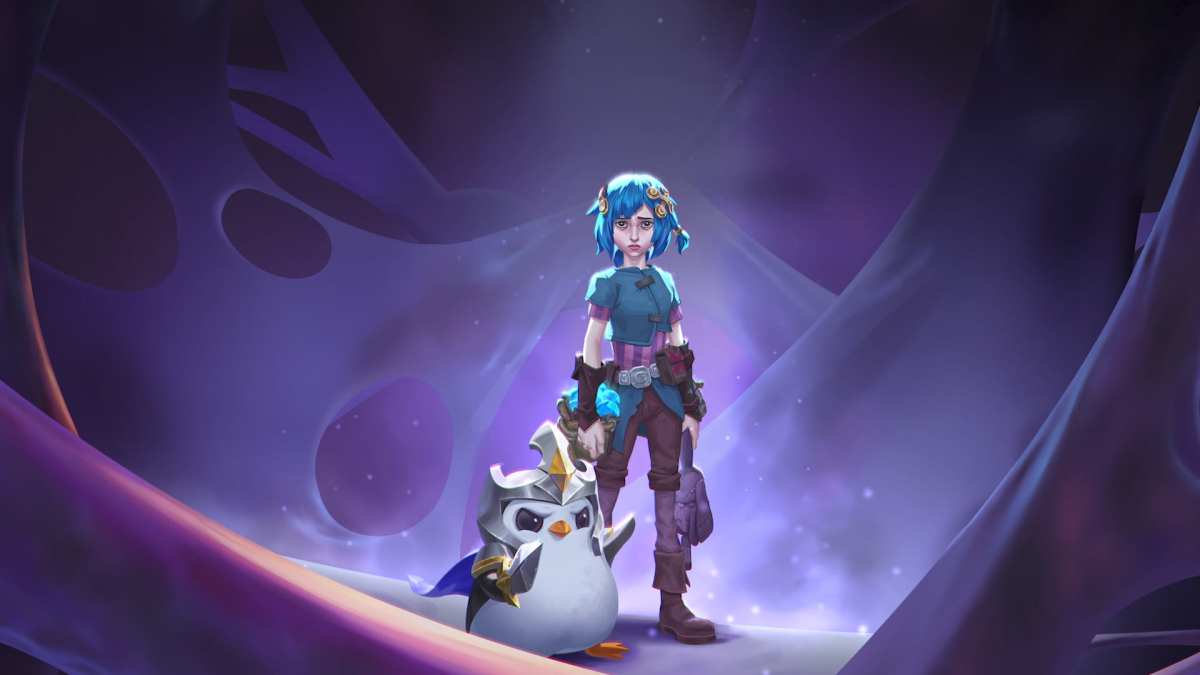Riot Games is taking Blizzard’s approach and revealing its new Teamfight Tactics classes, elements, and champions one by one. A range of content creators and personalities from the community unveiled absolutely everything coming to Rise of the Elements.
The upcoming set, scheduled to release in early November, will completely turn the autobattler on its head. There are a few familiar faces making a return, but the vast majority are new additions to the game.
Here are all the new classes and elements joining TFT for Rise of the Elements.
New classes
Alchemist

- One unit: Ignore unit collision, never stop moving.
Alchemist is an interesting new class that looks slightly out of place. It ignores unit collision, which has its benefits. But its place in the metagame is still uncertain.
Assassin

- Three units: +75 percent critical strike damage and 25 percent critical strike chance.
- Six units: +150 percent critical strike damage and 50 percent critical strike chance.
Assassins were one of the strongest classes in TFT’s first set, dominating the metagame in the first months of the game’s existence.
The new Assassin class coming to Set Two has the exact same stats, but a new set of champions will replace the old. At this time, it’s difficult to determine their strength, but like their precious iteration, they should be a powerful and flexible option.
Berserker

- Innate: Berserkers leap towards their closest enemy.
- Three units: 40 percent chance to cleave and deal 100 percent area of effect damage to surrounding units.
- Six units: 80 percent chance to cleave and deal 100 percent area of effect damage to surrounding units.
In an almost reverse of roles, Berserkers deal with the frontline while Assassins focus on the backline. Instead of bursting down single target enemies, though, Berserkers take care of tanks by using area of effect damage to their advantage.
Druid
- Two units: Summon a 2,000 health stone golem with Mountain element and the items of your highest tier Druid.
- Four units: Summon a 4,000 health stone golem with Mountain element and the items of your highest tier Druid.
Druid is pretty much Elementalists on steroids. Instead of summoning a golem with 2,200 health with four units, Druid has the potential of summoning a beefy 4,000 health golem with items.
Unlike Elementalists, the addition of items will give it the chance to deal a considerable amount of damage, while staying relatively healthy in a fight.
Mage

- Three units: 50 percent chance to double cast spells.
- Six units: 100 percent chance to double cast spells.
The new Mage class has tons of potential, especially when revolved around a carry unit. Imagine a three-item Aurelion Sol casting his ultimate twice. He’d absolutely destroy the enemy board.
Mystic

- Two units: All units gain 70 magic resist.
- Four units: All units gain 150 magic resist.
Mystic is the perfect counter to Mage-heavy compositions. Just two units could be enough to thwart a magic-focused lineup. Four units might even be adding insult to injury, completely blocking out ultimate damage.
The downside of Mystic, though, is that carry units will be incredibly important to deal effective damage. Other than magic resist, Mystic doesn’t offer much.
Predator
- Three units: Any damage a Predator deals to an enemy below 25 percent health will execute them for an instant kill.
Predator is an interesting class. It isn’t the strongest on the list, but it does have its benefits. The specific Predator units have yet to be revealed, but it looks like they’ll work effectively against tanks or even backline carries.
Twenty-five percent health is a considerable amount for tanks, and if a carry can somehow be whittled down, executing them will only help prevent team damage.
Ranger

- Two units: 35 percent chance to double all Ranger’s attack speeds for three seconds.
- Four units: 65 chance to double all Ranger’s attack speeds for three seconds.
- Six units: 100 percent chance to double all Ranger’s attack speeds for three seconds.
Ranger is another returning class to TFT. It’s far better than its previous iteration, though. Instead of relying on a four unit spike and banking on picking up a mid-game Kindred, Ranger is now much more dynamic.
Its two unit version is stronger than it previously was. It now has the potential of reaching six units and a whopping 100 percent chance to double attack speed.
Summoner

- Three units: 40 percent increased lifetime on summoned units.
- Six units: 100 percent increased lifetime on summoned units.
Similar to Shapeshifter, Summoner increases the length of summoned units. The wording around this class is unclear at this time, but it appears that it’ll synergize with new units, such as Annie, Zyra, and potentially even the Mystic class.
Warden

- Two units: +100 percent armor to Warden units.
- Four units: +250 percent armor to Warden units.
- Six units +400 percent armor to Warden units.
Warden is similar to Brawler, but instead of acting as a surviving tool against general damage, it now hard-counters physical damage. Warden should be a good all-around class, stopping Assassins and frontline sword-wielding champions in its path.
Like Mystic, though, it may miss out on the damage to withstand a fight. It would ideally be paired with a carry unit stacked with units.
New elements (origins)
Crystal
The full details concerning Crystal have yet to be revealed. The Element takes on champions like Ashe, Skarner, and Taric and synergizes with multiple classes.
Desert

- Two units: 50 percent armor penetration.
- Four units: 90 percent armor penetration.
Desert is an element that works particularly well against frontline tanks. Renekton, for example, will be able to chunk down tanks before spinning around and dealing area of effect damage.
Electric

- Two units: Shock nearly enemies for 60 damage every time they deal or receive a critical hit.
- Three units: Shock nearly enemies for 200 damage every time they deal or receive a critical hit.
- Four units: Shock nearly enemies for 500 damage every time they deal or receive a critical hit.
The Electric element adds another level of strategy to TFT. It could be paired nicely with Assassins, making the most out of their increased critical damage. Imagine critting with a set of Assassins before immediately shocking for 500 damage.
Equally, it could counter Assassins. When they critically strike, they too will receive the brunt of the damage. It’s an interesting dynamic that has multiple playstyles and possibilities.
Forest

- Three units: At the start of the round Forest champions clone themselves.
Forest has to be one of the most powerful elements in TFT. An added unit makes a big difference, especially in the early stages of a game. The new Forest champions may not be the best of the bunch, but its cloning potential is insane.
A player could have two Iverns dishing out power shields to his allies, two Maokais sustaining in the frontline and healing to their heart’s content, or even two LeBlancs throwing chains left, right, and center.
Glacial
- Two units: Glacials have a 20 percent chance to stun.
- Four units: Glacials have a 30 percent chance to stun.
- Six units: Glacials have a 45 percent chance to stun.
Glacials are making a return in Rise of the Elements. This time, though, a new set of champions will be swapped in, allowing for a change of pace. The full list of champions and changes have yet to be revealed, but it’s expected to be similar to the previous iteration of the origin.
Frosted Ezreal is just one example of the new units joining Glacials.
Inferno
- Three units: Burns the ground for five seconds and inflicts 80 percent damage from spells.
- Six units: Burns the ground for five seconds and inflicts 150 percent damage from spells.
- Nine units: Burns the ground for five seconds and inflicts 250 percent damage from spells.
Inferno is an area of effect based element that combines nicely with crowd control. When you’re up against a stacked team, Inferno can deal a tremendous amount of damage paired with strong champions and unit sets.
Depending on the AI, though, it may be hit or miss. Similar to Miss Fortune, the burning ground effect could easily miss and become obsolete in a fight. In this scenario, it could lead to a devastating and seemingly unfair loss.
Light

- Three units: When a Light champion dies, the remaining Light champions get 10 percent attack speed and recover 25 percent of their maximum life.
- Six units: When a Light champion dies, the remaining Light champions get 25 attack speed and recover 25 percent of their maximum life.
- Nine units: When a Light champion dies, the remaining Light champions get 50 attack speed and recover 25 percent of their maximum life.
A full set of Light champions could be extremely powerful. Leaving a squishy in the front as bait would instantly buffer up the team and cause mayhem. The added attack speed would allow for the faster use of ultimates and the health would keep them safe from harm.
Mountain

- Two units: At the start of combat, one random ally receives a Stone Shield with 1500 health.
Mountain is a great small synergy for any composition. It’s hit or miss, but if it hits, it’s big. It could just as easily buffer up a carry and prevent them from dying. Any champion with 1,500 health is massive. Add that on top of a tank and it’ll withstand almost anything.
Ocean

- Two units: All allies gain an additional 10 mana every three seconds.
- Four units: All allies gain an additional 25 mana every three seconds.
- Six units: All allies gain an additional 40 mana every three seconds.
The Ocean element is a powerful addition to TFT. Even the lowest iteration of the buff is strong enough in some circumstances and 40 mana every three seconds is incredible. A unit will already be ramping up mana in the early stages of the game before automatically doubling up and shooting out an ultimate or two.
Poison

- Three units: Champions add a neurotoxin when they deal damage. This increases the mana cost of the target by 50 percent.
Poison is the perfect counter for Ocean-orientated builds and Mages. Adding that 50 percent mana cost is a big deal. It stalls out the match, preventing the enemies from getting carried away.
The only problem with Poison is that it could be hit or miss. If it targets a frontline carry or a weaker unit, its neurotoxin could be wasted. It’s a risky element, but it definitely has its uses.
Shadow
The full details concerning Shadow have yet to be revealed. The element takes champions like Malzahar, Veigar, and Master Yi and synergizes with multiple classes.
Steel
- Two units: When a Steel unit falls below 50 percent health, gain invincibility for two seconds.
- Three units: When a Steel unit falls below 50 percent health, gain invincibility for three seconds.
- Four units: When a Steel unit falls below 50 percent health, gain invincibility for four seconds.
Steel has tons of potential, especially against strong, burst-oriented compositions. Those few seconds of invincibility could be the difference between winning and losing a match. A three-star Steel unit with a strong set of items will run rampant and be almost impossible to take down.
Wind

- Two units: All units gain 25 percent dodge chance when the Wind buff is active.
- Three units: All units gain 40 percent dodge chance when the Wind buff is active.
- Four units: All units gain 55 percent dodge chance when the Wind buff is active.
Wind is a good all-around buff for any composition. An added 25 percent dodge chance is a great addition to any team, let alone 40 or even 55 percent. The element has a Yordle passive feel to it, relying on RNG to survive.







Published: Oct 22, 2019 09:41 am